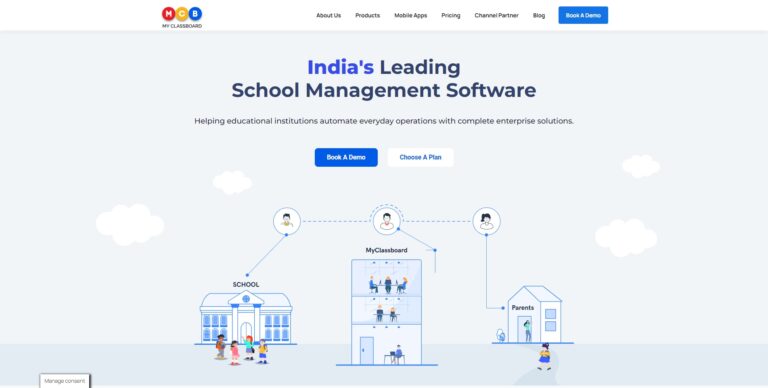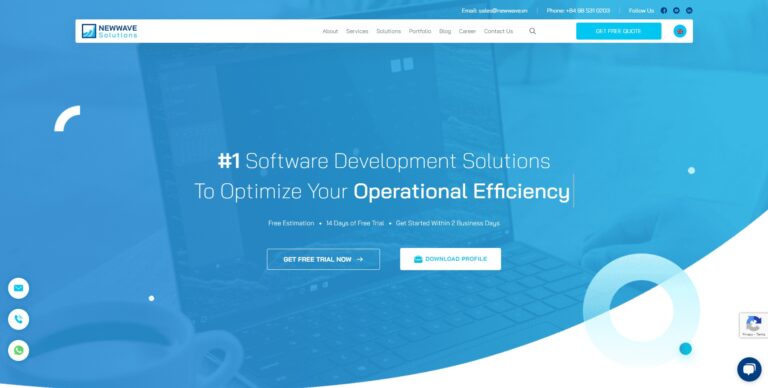Software Design & Architecture: Building the Foundation of Robust Applications

In the fast-paced world of technology, software applications have become an integral part of our daily lives. From mobile apps to web platforms and enterprise solutions, software serves as the backbone of modern society. However, the success and efficiency of any software product are heavily reliant on its design and architecture. In this article, we explore the essential concepts of software design and architecture and their significance in creating robust and scalable applications.
Understanding Software Design: The Art of Problem Solving
Software design is the process of transforming requirements into a detailed blueprint that defines how the software will be structured and organized. It is an essential phase of the software development lifecycle where engineers and designers collaborate to find solutions to complex problems and ensure the software meets its intended purpose.
The primary objective of software design is to create a design that is:
- Functional: The software should fulfill all the specified requirements and perform its intended tasks efficiently.
- Robust: It should handle errors gracefully and be resilient to unexpected inputs or events.
- Maintainable: The design should be easy to understand, modify, and extend, promoting long-term maintainability.
- Scalable: The software should be capable of handling increased workloads and growing user demands without compromising performance.
- Flexible: It should adapt to changes and future enhancements without significant rework.
Software Architecture: Laying the Foundation
Software architecture is the process of defining the fundamental structure and components of a software system. It is the blueprint that guides the overall organization, interaction, and behavior of the software. Just like the architecture of a building, software architecture sets the foundation for the entire project, ensuring it stands firm and meets its functional and non-functional requirements.
Key components of software architecture include:
- Components: Identifying the major building blocks of the system and defining their responsibilities and interactions.
- Data Management: Designing how data will be stored, accessed, and managed within the application.
- Communication: Defining how different components will communicate and exchange information.
- Security: Addressing security concerns and implementing measures to safeguard the system from potential threats.
- Scalability: Ensuring the architecture allows the system to handle increasing demands and scale as the user base grows.
- Performance: Optimizing the architecture to deliver high performance and responsiveness.
Design Patterns: Reusable Solutions to Common Problems
Design patterns are proven solutions to recurring problems in software design. They provide a standard approach to solving specific issues and promote best practices in software development. Design patterns help maintain consistency and make the code more understandable and maintainable.
Some popular design patterns include:
- Singleton: Ensures a class has only one instance and provides a global point of access to it.
- Factory Method: Provides an interface for creating objects but allows subclasses to alter the type of objects that will be created.
- Observer: Establishes a one-to-many dependency between objects, ensuring that when one object changes state, its dependents are notified and updated automatically.
- MVC (Model-View-Controller): Separates the application into three interconnected components – the model (data and business logic), the view (user interface), and the controller (handles user input and updates the model and view).
Importance of Software Design & Architecture
- Reduced Development Time: A well-thought-out architecture and design help avoid time-consuming rework and enable smoother development.
- Improved Collaboration: Clear design and architecture serve as a common language for development teams, promoting effective communication and collaboration.
- Maintainability: A good design makes it easier to fix bugs, add new features, and enhance the software over time.
- Robustness and Reliability: A well-architected system is less prone to failures and better equipped to handle unexpected scenarios.
- Cost-Effectiveness: Early investment in design and architecture saves resources in the long run by minimizing maintenance costs and reducing the chances of project failures.
Conclusion
Software design and architecture are the cornerstones of successful software development. They provide a systematic approach to solving problems, ensure that the software meets its intended goals, and lays the foundation for a robust, scalable, and maintainable application. By adopting best practices in software design and architecture, developers can build innovative and reliable software solutions that stand the test of time.
Business Listings Related to the Article: Software Design & Architecture: Building the Foundation of Robust Applications
Dock 365 CLM System
Dock 365 CLM System stands as a sophisticated all-in-one contract management software, expertly crafted for seamless integration with Microsoft 365.
- Category
- Business Services
MyClassboard
MyClassboard is an advanced school ERP software, meticulously crafted to streamline and optimize the entire school management process. At its core, this innovative solution comprises a comprehensive collection of modules, thoughtfully engineered to seamlessly automate various administrative tasks.
- Category
- Education & Training
Newwave Solutions
Newwave Solutions, a top-notch Software Development Company boasting over 11 years of experience, is at the forefront of business revolution.
- Category
- Web Design & Development
More Articles Like: Software Design & Architecture: Building the Foundation of Robust Applications
Unlocking the Power of InfiniBand: A Primer on High-Speed Networking
In the realm of high-performance computing (HPC), where processing vast amounts of data in minimal time is paramount, the infrastructure supporting these operations plays a pivotal role. One such critical component is InfiniBand, a high-speed interconnect technology that has become the backbone of many supercomputers, data centers, and enterprise environments. In this article, we’ll delve […]
Exploring Sylius: An Overview of the Open Source eCommerce Framework
In the dynamic landscape of eCommerce, businesses constantly seek robust and flexible solutions to manage their online stores effectively. One such solution gaining prominence is Sylius—an open-source eCommerce framework. Sylius offers a modern and customizable platform for building online shops, providing developers and businesses with the tools they need to create tailored eCommerce experiences. Understanding […]
Debunking the Notion: Why WordPress Cannot Be Considered a Framework
WordPress, undoubtedly one of the most popular content management systems (CMS) globally, has played a significant role in shaping the digital landscape. With its user-friendly interface and an extensive library of plugins and themes, it has enabled countless individuals and businesses to establish an online presence. However, there’s an ongoing debate about whether WordPress can […]







